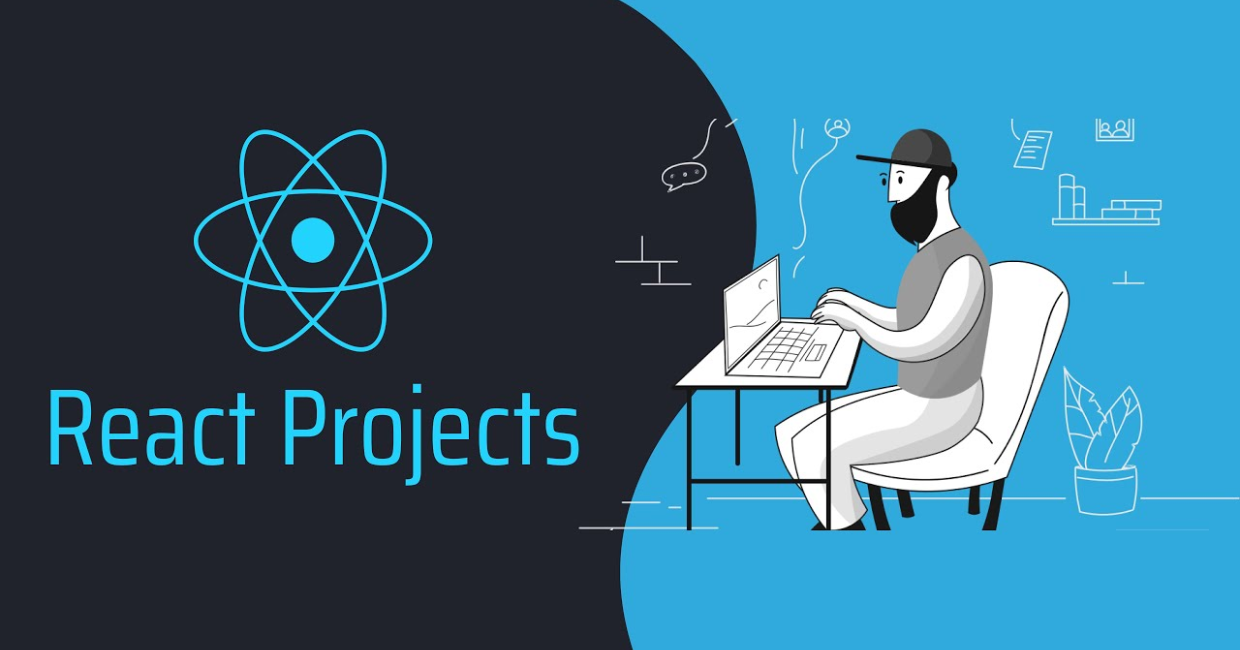Introduction
React has become one of the most popular JavaScript libraries for building modern web applications. Whether you are a beginner or an experienced developer, setting up a React project correctly is the first and most crucial step.
In this comprehensive guide, we will walk through the process of setting up a React project from scratch. By the end of this article, you will have a fully functional React development environment ready to build your web applications.
What is React? A Beginner’s Guide
1. What is React?
Before diving into setting up a React project, let’s quickly understand what React is.
React is a JavaScript library for building user interfaces (UI). It was developed by Facebook (Meta) and is widely used for creating single-page applications (SPAs). React allows developers to build applications using components, making code more reusable and maintainable.
2. Prerequisites for Setting Up a React Project
Before you start setting up a React project, make sure you have the following installed on your system:
2.1 Install Node.js and npm
React requires Node.js and npm (Node Package Manager) to manage dependencies.
How to check if Node.js and npm are installed?
Open your terminal or command prompt and type:
node -v
npm -v
If Node.js and npm are installed, you will see version numbers. If not, follow the steps below to install them.
How to install Node.js and npm?
- Go to the official Node.js website: https://nodejs.org
- Download and install the LTS (Long-Term Support) version for your operating system.
- After installation, verify using the
node -vandnpm -vcommands.
3. Creating a React Project
There are multiple ways to set up a React project. The most common methods are:
- Using Create React App (CRA)
- Using Vite (a faster alternative to CRA)
- Manually setting up React with Webpack and Babel (for advanced users)
We will cover Create React App (CRA) and Vite, as they are beginner-friendly and widely used.
4. Setting Up React Using Create React App (CRA)
Create React App is the easiest way to set up a React project with zero configuration. It comes with Webpack, Babel, and other essential tools pre-configured.
4.1 Creating a New React App
Run the following command in your terminal:
npx create-react-app my-app
Explanation:
npxruns a package without globally installing it.create-react-appis the tool that sets up the React project.my-appis the name of your project (you can change it).
4.2 Navigating to the Project Directory
Once the project is created, move into the project folder:
cd my-app
4.3 Running the Development Server
Start the React development server with:
npm start
This will launch your application in the browser at:
http://localhost:3000
5. Setting Up React Using Vite (Faster Alternative to CRA)
Vite is a modern build tool that is significantly faster than Create React App.
5.1 Installing Vite and Creating a React Project
Run the following command:
npm create vite@latest my-vite-app --template react
5.2 Navigating to the Project Directory
cd my-vite-app
5.3 Installing Dependencies
npm install
5.4 Running the Development Server
npm run dev
Your React app will be available at http://localhost:5173.
6. Understanding the React Project Structure
After setting up a React project, you will see a directory structure like this:
my-app/
├── node_modules/
├── public/
│ ├── index.html
├── src/
│ ├── App.js
│ ├── index.js
│ ├── components/
├── package.json
├── .gitignore
├── README.md
Key Files and Folders
- public/index.html → The main HTML file where the React app is injected.
- src/index.js → Entry point of the React application.
- src/App.js → Main React component.
- src/components/ → Folder to store reusable components.
- package.json → Contains project dependencies and scripts.
7. Writing Your First React Component
Let’s modify the default App component and create our first React component.
7.1 Editing App.js
Open src/App.js and replace the default code with:
import React from 'react';
function App() {
return (
<div>
<h1>Welcome to My React App!</h1>
<p>This is my first React component.</p>
</div>
);
}
export default App;
7.2 Saving and Viewing Changes
Save the file and check your browser (http://localhost:3000). You should see your updated text.
8. Managing Dependencies and Packages
React projects often require additional libraries. You can install them using npm.
8.1 Installing React Router
React Router is used for handling navigation in a React application. Install it using:
npm install react-router-dom
8.2 Installing Bootstrap for Styling
To add Bootstrap for better UI styling, run:
npm install bootstrap
Then import Bootstrap in index.js:
import 'bootstrap/dist/css/bootstrap.min.css';
9. Using State and Props in React
9.1 Understanding State
State allows components to manage dynamic data.
Example:
import React, { useState } from 'react';
function Counter() {
const [count, setCount] = useState(0);
return (
<div>
<p>Count: {count}</p>
<button onClick={() => setCount(count + 1)}>Increase</button>
</div>
);
}
export default Counter;
9.2 Understanding Props
Props allow data to be passed from one component to another.
Example:
function Greeting(props) {
return <h1>Hello, {props.name}!</h1>;
}
export default Greeting;
Using the component:
<Greeting name="John" />
10. Deploying Your React App
Once your project is complete, you need to deploy it for others to access.
10.1 Building the Project for Production
Run:
npm run build
This creates an optimized production-ready version of your app in the build/ folder.
10.2 Deploying to GitHub Pages
To deploy on GitHub Pages, install the package:
npm install gh-pages --save-dev
Then, add the following to package.json:
"homepage": "https://yourusername.github.io/my-app",
"scripts": {
"predeploy": "npm run build",
"deploy": "gh-pages -d build"
}
Finally, deploy using:
npm run deploy
Conclusion
Setting up a React project is an essential skill for any front-end developer. Whether you use Create React App or Vite, both provide a solid foundation for building powerful applications.
By following this step-by-step guide, you should now have a complete React development environment ready. You have also learned how to create components, manage state, and deploy your app.
Now, it’s time to start building exciting projects with React! 🚀
